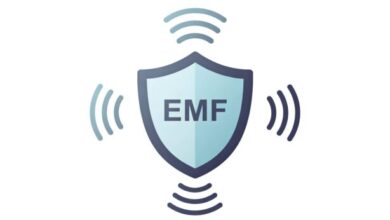
SASE, or Secure Access Service Edge, is a revolutionary network architecture combining wide-area networking (WAN) capabilities with comprehensive security functions. This advanced approach integrates multiple security solutions into a single framework, such as firewalls, VPNs, and secure web gateways. This unified and highly adaptable solution ensures businesses achieve efficiency and modern security practices in their networking infrastructure. Companies are increasingly shifting to this cutting-edge model for effective SASE management to streamline their operations while enhancing overall security measures. SASE facilitates the convergence of networking and security, providing a holistic approach that addresses the evolving landscape of digital threats.
Why Businesses Need SASE
In today’s digital era, traditional network models need help to keep up with the growing demands for both security and performance. The rapid expansion of remote work and the widespread adoption of cloud services have highlighted the limitations of older network architectures. SASE offers a streamlined approach to network management, making it easier to ensure data security across various access points and devices. It is critical for modern business operations, which demand seamless and secure connectivity for employees working from different locations and on other devices. Additionally, SASE provides a scalable solution that can grow with your business, adapting to your changing needs. This adaptability is essential for companies looking to stay competitive in an increasingly digital world. Furthermore, businesses need a robust defense mechanism as cyber threats become more sophisticated. SASE’s integrated approach allows for centralized security management, making implementing and updating security policies across the entire network easier.
Key Features of SASE
- Cloud-Native Architecture: SASE is designed to integrate seamlessly with cloud services, providing unmatched scalability and flexibility. This cloud-native approach enables businesses to expand their networks without compromising security or performance. As companies migrate to cloud-based services, having a cloud-native network architecture ensures better alignment with their digital transformation goals.
- Zero Trust Network Access: This sophisticated feature ensures that every user and device is thoroughly verified before granting access to network resources. By adopting a zero-trust framework, companies can significantly minimize the chances of unauthorized entry and potential data leaks. Zero Trust works on the concept of “never trust, always verify,” guaranteeing that all access requests are thoroughly authenticated, regardless of their source within or outside the network.
- Secure Web Gateway: SASE includes robust web security measures that inspect web traffic for harmful content and ensure that users do not inadvertently download malware or access malicious websites. This feature is critical in protecting users from web-based threats, which are increasingly prevalent in the digital landscape.
Benefits of Implementing SASE
Implementing SASE offers multiple benefits across various facets of business operations. Among these benefits are:
- Enhanced Security: With real-time threat detection and automated responses, SASE ensures your network remains protected against evolving cyber threats. This proactive security approach is invaluable in safeguarding sensitive business data and maintaining customer trust. Detecting and neutralizing threats in real time helps prevent potential breaches and minimize their impact.
- Cost Efficiency: SASE’s integrated approach to combining networking and security functions helps reduce the need for multiple-point solutions. This consolidation leads to lower hardware and software costs and reduced complexity in network management. By streamlining these processes, businesses can achieve significant cost savings regarding initial investment and ongoing maintenance.
- Improved Performance: SASE optimizes data routing and prioritizes traffic based on real-time analysis, resulting in faster and more reliable network performance. It guarantees the continuous operation and effectiveness of essential applications and services. Enhanced performance translates to better user experiences, increased productivity, and, ultimately, more significant business outcomes.
Real-World Examples
Several companies have successfully implemented SASE to enhance their network security and efficiency. For instance, a leading financial institution adopted SASE to unify its security protocols across multiple global offices. Doing so mitigated risks and simplified its network management, significantly improving performance and security. Another example is a multinational retail chain that faced challenges securing its widespread operations. The company successfully implemented SASE, resulting in centralized security management, enhanced data protection, and improved monitoring and response to security incidents at all locations. These real-world implementations demonstrate the practicality and effectiveness of SASE in diverse industry settings.
Common Challenges and Solutions
Implementing SASE may pose difficulties, including integration complications and the necessity for thorough staff training. Businesses may find that integrating SASE with existing infrastructure complexes and creating a seamless transition requires careful planning. It is advisable to adopt a phased implementation approach to address these challenges. This approach allows businesses to gradually integrate SASE components while minimizing disruption to ongoing operations. Phased implementation enables enterprises to identify and resolve issues incrementally, ensuring a smoother transition.
Furthermore, comprehensive employee education programs are crucial to ensure that staff are well-versed in the new system and its functionalities. Training programs should cover the principles of SASE, its features, and the best practices for utilizing the system effectively. Partnering with experienced vendors can simplify the process and provide valuable insights and support throughout the transition. Vendors can offer expert guidance and technical assistance, helping businesses overcome challenges and successfully implement SASE.
How to Get Started
Ready to transform your business network with SASE? Start by thoroughly assessing your current network infrastructure to identify areas that require improvement. This assessment should involve evaluating your existing security measures, network performance, and points of vulnerability. Getting help from a reliable service provider can assist in creating a personalized SASE solution that meets your unique business requirements. Your chosen vendor should offer comprehensive support, including initial setup, integration, and ongoing management. Collaborate closely with the provider to ensure that the SASE solution is customized to fit your business’s unique requirements, enabling you to maximize the benefits of this advanced network architecture. Moreover, a well-planned implementation strategy is essential to ensure the smooth adoption of SASE. Utilize your service provider’s knowledge to create a thorough roadmap with steps, timelines, and resources required for a successful deployment.



